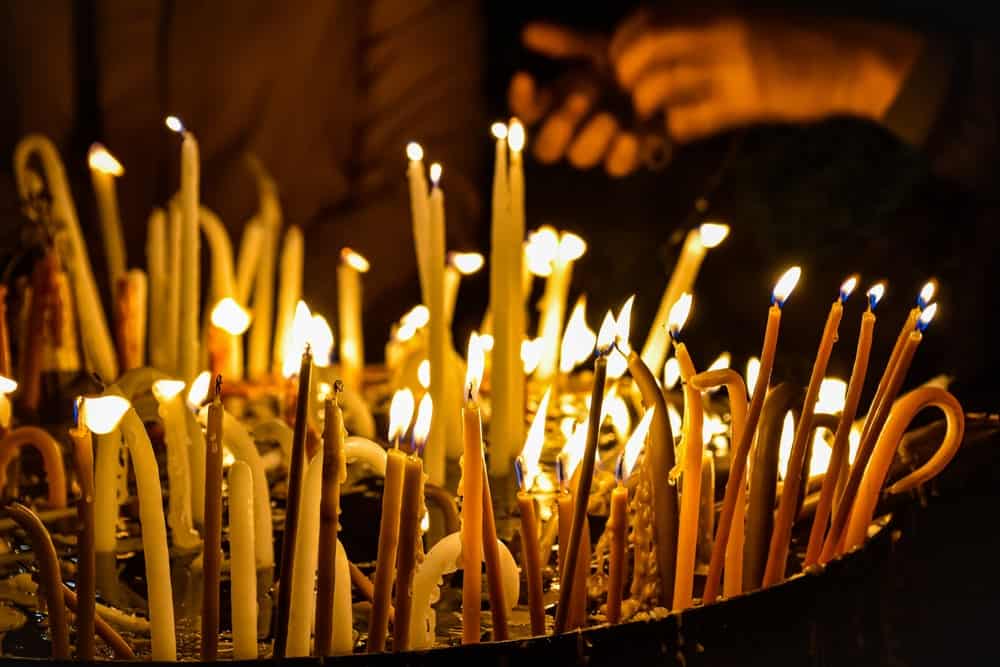The Cousin of the Candle

You may have often lit candles during Christmas and New Year celebrations, and you perhaps know that its name in Armenian is mom (մոմ), a word that comes from the fifth century (borrowed from Pahlavi, one of the languages spoken in Iran) and actually meant “wax.”
The source of candle (Old English candel “lamp, lantern, candle”) is the Latin word candela (“a light, torch, candle made of tallow or wax”), which comes from the verb candere (“to shine”). There is nothing strange: a dozen or so languages have borrowed the same word candela, from French chandelle (here one is reminded of English chandelier) to Turkish qandil.
However, there is an Armenian word much closer to English candle: gantegh (կանթեղ). In ancient times, it designated a candle, an oil lamp, or a torch. It existed in the fifth century, and it was used by writers like Koriun, the disciple of Mesrob Mashdots; Agatangeghos, the mysterious author of the account on the conversion of Armenia to Christianity; and Ghazar Parbetsi, the historian of the post-Avarayr period. At the time, it was pronounced kantheł (th as in Thomas, while the ł represented a sound between a l and a gh, which has disappeared today), closer to its current pronunciation in Eastern Armenian (kanthegh).
Latin was also the source for Classical Greek, where the word became kandḗlē (κανδήλη) and became the source for Classical Armenian gantegh. In this case, the Greek delta (δ) became the Armenian to (թ); otherwise, if the source had been Latin, the Latin d would have been ta (դ).
In conclusion, a candle and a gantegh are second cousins. The meaning of the Armenian word, however, has changed. We do not think of it when we light a candle or a torch (chah / ջահ), but when we turn on a lamp or a chandelier. For instance, Loosavorichi ganteghe (Լուսաւորչի կանթեղը) is the “lamp without cord” that St. Gregory the Illuminator hung from the sky to protect the Armenian world in times of darkness. Famous poets like Hovhannes Toumanian and Vahan Tekeyan wrote about it.
